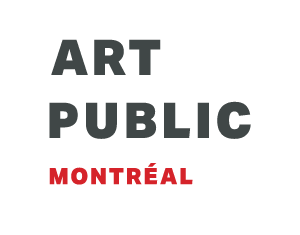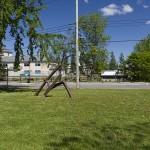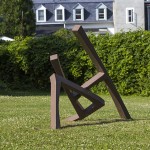

Claude Millette, born in Saint-Hyacinthe, received his education at the École de sculpture de Saint-Jean-Port-Joli, complemented by apprenticing internships with Robert Poulin and Jordi Bonet. His works have been featured in numerous solo and group exhibitions and are in the collections of, among others, the Musée d’art contemporain de Montréal, the Musée d’art de Joliette, and the Musée du Bas-Saint-Laurent. Among the 20 works of public art that he has produced is L’amphore cryogénique, created for a commission by the Ville de Pointe-Claire to mark the new millennium. The artwork includes a time capsule.

Artwork description
The work stands on the outdoor site of the Musée de Lachine. It is formed by a group of six quadrangular beams resting on three points of support on the ground. Some of the beams are perpendicular to each other, whereas others are parallel. They form what resembles a twisted capital H. The sculpture is made of brown-painted steel.
In 1982, when he was presenting the exhibition Trajectoires et tensions, Millette was interested, among other things, in maximum occupation of a space with a minimum of materials. Despite the artwork’s immobility, the orientation of its components creates an internal rhythm and a strong impression of rising movement. The organization of the beams suggests that it results from a series of inflexions, twists, and bends.
Later, Millette said about his works, “I want to leave the impression that a conversation is engaged in the heart of the material, but also between the material and the site where it is installed.” The bulging ends of the beams breathe an apparent suppleness into the lines, placing them at the intersection of geometric and organic forms.



